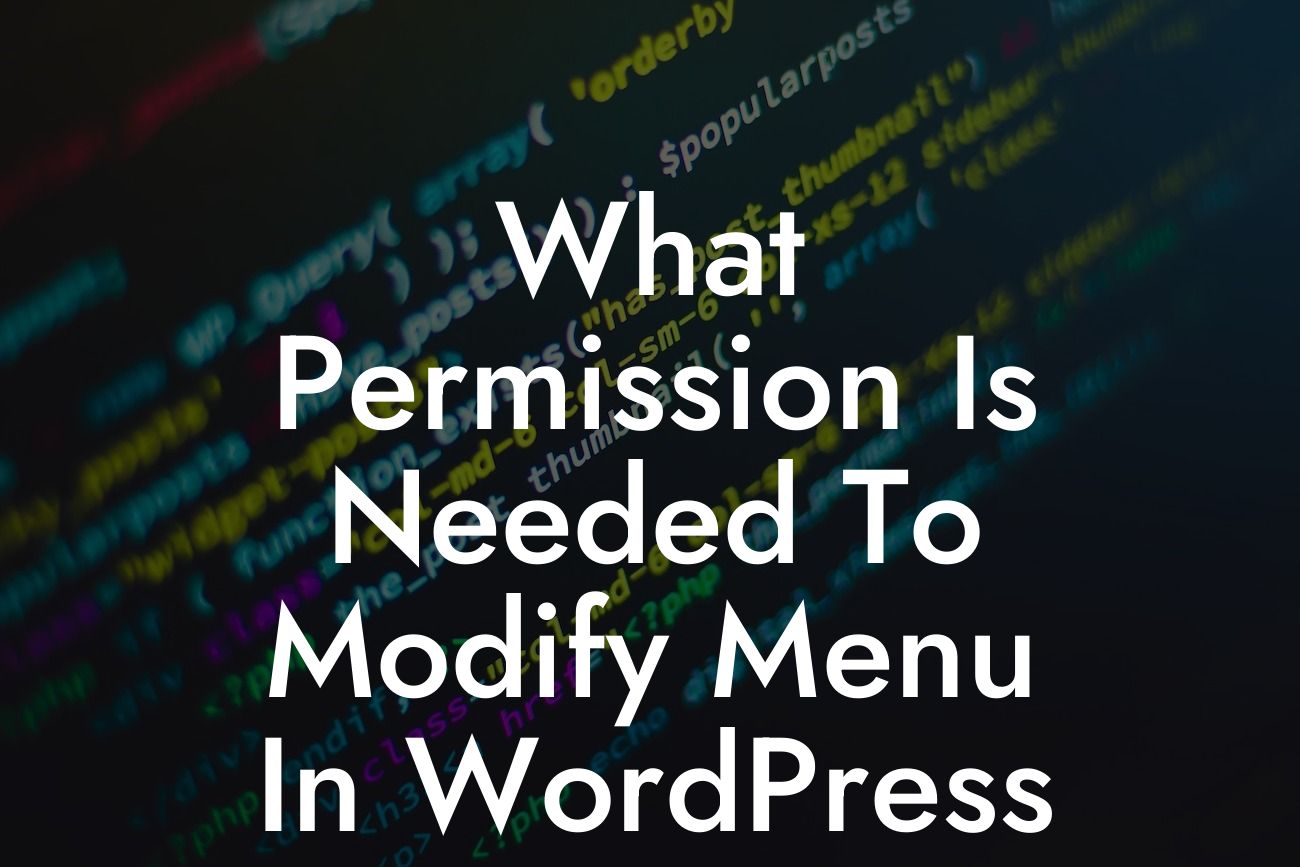Customizing the menu in WordPress is a crucial step in creating a user-friendly and informative website. Whether you're a small business owner or an entrepreneur, having the ability to modify menus can greatly enhance your online presence. In this article, we will dive into the necessary permissions needed to modify menus in WordPress and explore some practical examples along the way. With DamnWoo's exceptional plugins, you'll have everything you need to take your website to the next level.
Modifying menus in WordPress may seem like a daunting task, but fear not! With the right permissions and the right tools, you'll be able to effortlessly make the changes you desire. Let's break it down step by step:
1. Understanding User Roles and Capabilities:
Before diving into the menu modification process, it's important to familiarize yourself with user roles and capabilities in WordPress. User roles dictate what actions users can perform, including menu modifications. The two main roles responsible for menu customization are Administrators and Editors. Administrators have full control over the website, while Editors have more limited access.
2. Accessing the Menu Settings:
Looking For a Custom QuickBook Integration?
To modify menus in WordPress, start by logging into the backend of your website. Once logged in, navigate to the "Appearance" tab and select "Menus". This will take you to the menu settings where you can make the desired changes.
3. Adding and Modifying Menu Items:
To add a new menu item, select the desired page, post, or custom link from the left-hand column and click "Add to Menu". You can then rearrange the menu items by dragging and dropping them. To modify an existing menu item, click on it to reveal customization options such as changing the title, URL, or link type.
4. Creating Sub-Menus:
Sub-menus are a great way to organize your website's navigation. To create a sub-menu, drag a menu item slightly to the right, positioning it beneath another menu item. This indentation signifies that it is a sub-menu item. Repeat this process as needed to create multiple levels of sub-menus.
What Permission Is Needed To Modify Menu In Wordpress Example:
Imagine you run an e-commerce website selling personalized gifts. You want to create a menu item called "Personalized Items" to showcase your products. Using WordPress and DamnWoo's plugins, you can easily add this new menu item, customize its appearance, and link it to the corresponding product category page. This will improve your website's navigation and help visitors find what they're looking for with ease.
Modifying menus in WordPress doesn't have to be a complicated endeavor. With the right permissions and the right tools, such as DamnWoo's exceptional plugins, you can elevate your website's navigation and provide an enhanced user experience. Don't settle for cookie-cutter solutions; embrace the extraordinary. Share this article with others who might benefit from it, explore other guides on DamnWoo, and try one of our awesome plugins to supercharge your online success.













